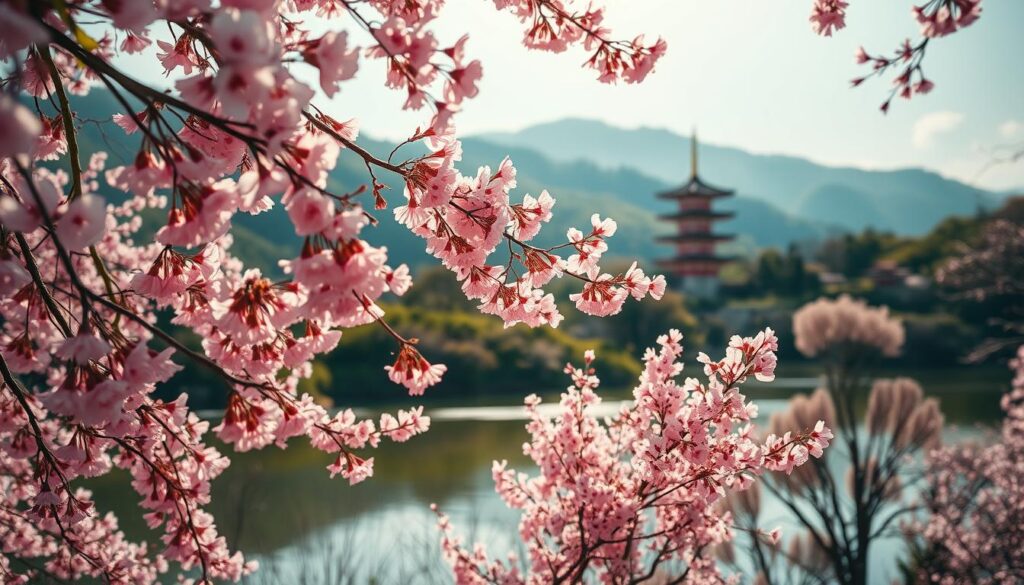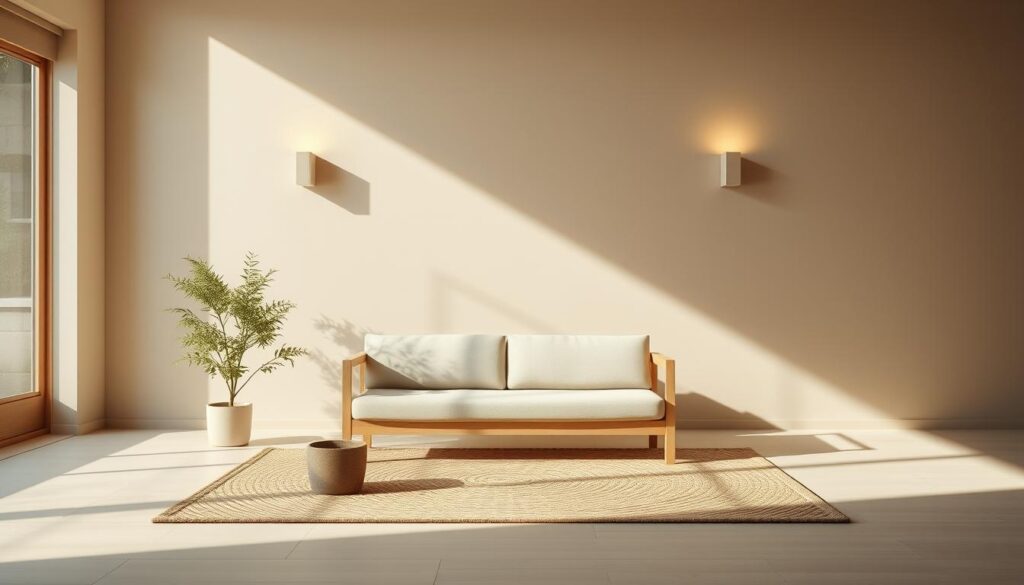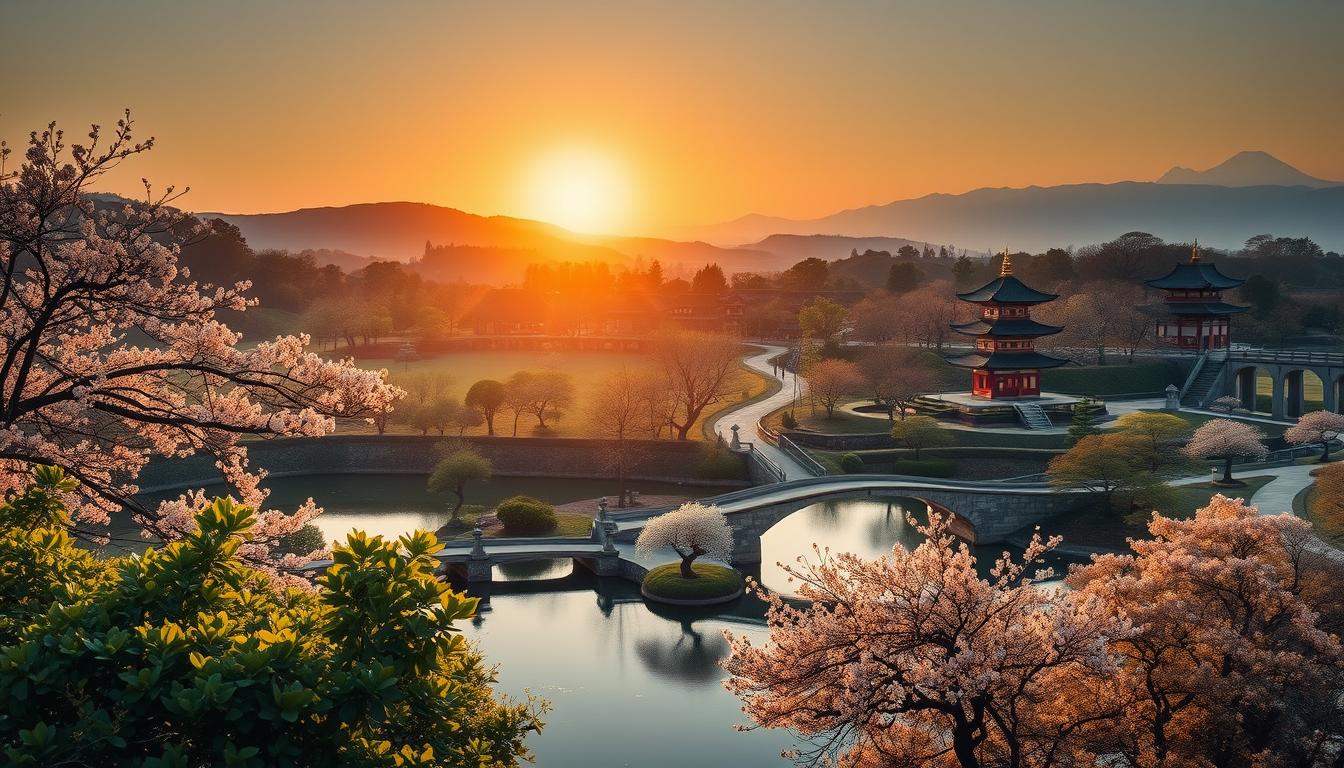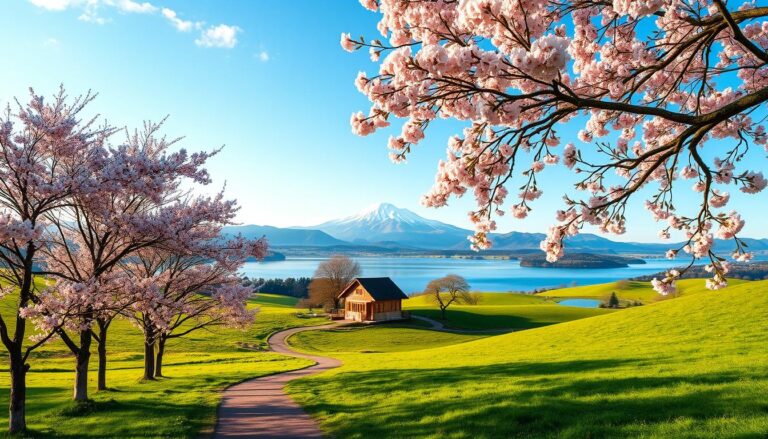Explore the Captivating Aesthetic of Japan
The first time I glimpsed Japan’s breathtaking landscape, something profound shifted inside me. Delicate cherry blossoms dancing against ancient temple backdrops whispered stories of a culture where beauty transcends mere visual experience. The japan travel aesthetic isn’t just about seeing—it’s about feeling the intricate harmony between tradition and modernity.
Japan offers travelers a visual symphony that transforms ordinary moments into extraordinary memories. From bustling Tokyo streets to serene Kyoto temples, every scene tells a story of artistic precision and cultural depth. The japan travel aesthetic captures a unique visual language that speaks directly to the soul, inviting explorers to witness a world where design, nature, and emotion intertwine seamlessly.
This journey will unveil the mesmerizing visual tapestry of Japan—a destination where every landscape, architectural detail, and cultural expression represents a carefully crafted aesthetic experience that goes far beyond simple tourism.
Table of Contents
Understanding Japan’s Unique Visual Identity
Japanese design emerges from a profound cultural landscape that blends philosophy, history, and aesthetic principles. The visual identity of Japan represents a delicate interplay between tradition and innovation, rooted in deep philosophical concepts like wabi-sabi and ikigai.
At the core of Japanese visual expression lies a nuanced understanding of beauty that transcends mere appearance. The principles of wabi-sabi embrace imperfection, transience, and simplicity as fundamental aesthetic values.
The Philosophy Behind Japanese Design
Japanese design philosophy centers on several key principles:
- Minimalism and simplicity
- Respect for natural materials
- Balance and harmony
- Attention to intricate details
Historical Influences on Modern Aesthetics
The evolution of Japanese visual identity draws from rich historical traditions. Ancient practices like zen Buddhism and samurai culture have profoundly shaped contemporary design approaches.
| Historical Period | Design Characteristics |
|---|---|
| Edo Period | Intricate woodblock prints, refined craftsmanship |
| Meiji Era | Western influences merged with traditional aesthetics |
| Post-War Period | Minimalist design, technological innovation |
Cultural Elements Shaping Visual Expression
The concept of ikigai plays a crucial role in understanding Japanese design. Ikigai represents the intersection of passion, mission, profession, and vocation—a philosophy that deeply influences creative expressions across various disciplines.
By embracing imperfection through wabi-sabi and seeking purpose through ikigai, Japanese design continues to captivate global audiences with its unique visual language.
The Art of Wabi-Sabi in Japanese Culture
Wabi-sabi represents a profound philosophical approach to beauty that transforms how we perceive imperfection and transience in Japanese culture. This unique aesthetic philosophy goes beyond simple design principles, embracing the raw authenticity of natural objects and experiences.
At its core, wabi-sabi celebrates three fundamental characteristics:
- Impermanence of all things
- Appreciation of natural aging processes
- Finding beauty in simplicity and incompleteness
Traditional architecture perfectly embodies the wabi-sabi aesthetic through materials and design choices. Wooden structures with weathered surfaces, asymmetrical gardens, and minimalist spaces reflect this deep cultural understanding of beauty’s ephemeral nature.
“Wabi-sabi is the art of finding profound beauty in life’s imperfections.”
In practice, wabi-sabi manifests in various artistic expressions:
- Ceramic art with intentional cracks
- Tea ceremony utensils with subtle irregularities
- Architectural spaces that embrace natural wear
By understanding wabi-sabi, we learn to appreciate the subtle elegance of impermanence and recognize beauty beyond conventional perfection.
Traditional Japanese Architecture and Design Principles
Japanese traditional architecture represents a profound dialogue between human creativity and natural environments. The intricate design principles of ryokans and temples showcase a unique approach to spatial harmony and aesthetic beauty that has captivated architects and design enthusiasts worldwide.
The essence of traditional architecture in Japan goes far beyond mere construction. It embodies a deep philosophical understanding of space, balance, and connection with the surrounding landscape.
Foundational Design Elements
- Minimalist spatial arrangements
- Emphasis on natural materials
- Seamless indoor-outdoor transitions
- Respect for environmental context
Distinctive Architectural Characteristics
Ryokans exemplify the pinnacle of traditional Japanese residential design. These wooden structures prioritize simplicity, featuring:
- Tatami mat flooring
- Sliding shoji screens
- Low-profile furniture
- Natural wood elements
Building Materials and Natural Integration
| Material | Characteristic | Symbolic Meaning |
|---|---|---|
| Wood | Flexible and renewable | Connection with nature |
| Paper | Translucent partitions | Softness and adaptability |
| Stone | Structural foundation | Permanence and stability |
The architectural approach in traditional Japanese design transcends visual aesthetics, creating spaces that breathe with a sense of tranquility and purposeful simplicity.
Zen Gardens: Mastering Minimalist Beauty
Zen gardens represent the pinnacle of Japanese minimalism, transforming outdoor spaces into profound meditative landscapes. These carefully curated environments distill natural elements into their most essential forms, creating serene and contemplative spaces that speak volumes through simplicity.
The core principles of zen gardens revolve around strategic design and spiritual symbolism. Designers meticulously arrange rocks, gravel, and carefully pruned plants to create visual narratives that transcend traditional landscape architecture.
- Rocks symbolize mountains and permanent elements
- Gravel represents water and movement
- Sparse vegetation emphasizes negative space
- Carefully raked patterns create rhythmic visual texture
Minimalism in zen gardens goes beyond aesthetic preferences. These spaces embody Zen Buddhist philosophy, encouraging meditation, reflection, and inner peace through stripped-down visual experiences.
| Garden Element | Symbolic Meaning | Design Purpose |
|---|---|---|
| Stone Arrangements | Permanent landscape | Create visual anchors |
| Raked Gravel | Flowing water | Represent dynamic energy |
| Sparse Vegetation | Natural balance | Emphasize spatial harmony |
Contemporary designers worldwide continue to draw inspiration from zen gardens, incorporating minimalist principles into urban landscapes, interior design, and architectural spaces. The enduring appeal of these gardens lies in their ability to transform simple elements into profound aesthetic experiences.
The Japan Travel Aesthetic: A Visual Journey
Japan offers a breathtaking visual experience that captivates travelers through its unique blend of modern urban landscapes and serene natural environments. The japan travel aesthetic captures the essence of a country where tradition and innovation coexist in perfect harmony.
Travelers can immerse themselves in a visual journey that spans diverse landscapes, revealing the intricate beauty of Japan’s cultural and geographical tapestry. From bustling cityscapes to tranquil rural settings, each destination promises a distinct photographic adventure.
Urban Photography Opportunities
Tokyo’s vibrant streets offer photographers an electrifying canvas of visual experiences. The city’s unique urban aesthetic presents remarkable opportunities for capturing:
- Neon-lit street scenes
- Architectural marvels
- Bustling pedestrian crossings
- Futuristic technological displays
Rural Landscape Perspectives
Beyond the urban centers, rural Japan presents a completely different japan travel aesthetic. Misty mountains, traditional rice paddies, and historic villages provide photographers with breathtaking natural compositions.
Seasonal Color Palettes
The cherry blossoms represent a pinnacle of Japan’s seasonal visual narrative. These delicate pink flowers transform landscapes into ethereal scenes, creating unparalleled photographic moments. Each season brings its unique color palette:
- Spring: Soft pink cherry blossoms
- Autumn: Vibrant red and orange foliage
- Winter: Pristine white snow-covered landscapes
- Summer: Lush green mountain ranges
The dynamic visual journey through Japan promises photographers and travelers an unforgettable exploration of aesthetic beauty across urban and rural landscapes.
Cherry Blossoms and Seasonal Transformations

Japan’s cherry blossoms, or sakura, represent more than just a natural phenomenon—they embody the essence of the japan travel aesthetic. These delicate pink flowers transform the landscape into a breathtaking canvas of ephemeral beauty, capturing the Japanese philosophy of appreciating momentary experiences.
The annual cherry blossom season triggers a nationwide celebration called hanami, where people gather under blooming trees to enjoy nature’s spectacular display. Different regions experience peak bloom at varying times, creating a wave of pink that sweeps across the country from southern to northern islands.
“The cherry blossom represents the fragility and beauty of life in Japanese culture.” – Traditional Japanese Proverb
- Best cherry blossom viewing locations:
- Ueno Park, Tokyo
- Maruyama Park, Kyoto
- Hirosaki Park, Aomori Prefecture
- Typical bloom periods:
- Southern Japan: Late March
- Central Japan: Early April
- Northern Japan: Mid-May
Photographers and travelers seeking the ultimate japan travel aesthetic find cherry blossoms irresistible. The brief flowering period symbolizes the transient nature of beauty, encouraging viewers to appreciate each fleeting moment. Beyond sakura, Japan’s seasonal transformations—from autumn’s crimson maple leaves to winter’s pristine snowscapes—continue to enchant visitors with their unique visual poetry.
Traditional Arts and Geisha Culture
Japan’s rich cultural tapestry weaves together intricate traditions that have captivated global audiences for centuries. Geisha culture stands as a profound expression of artistic excellence, representing a delicate balance between performance, skill, and cultural preservation.
The world of geisha culture extends far beyond mere entertainment. These skilled artists embody centuries of refined artistic training, representing living repositories of traditional Japanese performing arts.
Tea Ceremony Aesthetics
The Japanese tea ceremony transforms drinking tea into a mesmerizing art form. Each movement reflects deep philosophical principles of:
- Mindfulness
- Respect
- Harmony with nature
- Precision of traditional architecture
Performance Arts and Costumes
Traditional Japanese performance arts like Kabuki and Noh showcase extraordinary visual storytelling. Elaborate costumes and meticulously designed stage settings bring historical narratives to life, creating immersive experiences that transcend ordinary theatrical performances.
Cultural Preservation Efforts
Modern Japan remains deeply committed to preserving its cultural heritage. Educational programs and specialized schools continue training young artists in geisha culture, ensuring these exquisite traditions remain vibrant and relevant in contemporary society.
“Tradition is not the worship of ashes, but the preservation of fire.” – Gustav Mahler
Modern Japanese Design and Minimalism

Japanese design represents a powerful fusion of tradition and innovation, where minimalism emerges as a defining philosophy. The japan travel aesthetic captures this essence through clean lines, purposeful spaces, and an extraordinary attention to detail that transforms everyday objects into art.
The roots of minimalism in Japanese design run deep, drawing inspiration from centuries-old cultural principles. Designers like Naoto Fukasawa and Kenya Hara have championed an approach that celebrates simplicity and functionality.
- Removing unnecessary elements
- Focusing on essential forms
- Embracing negative space
- Prioritizing user experience
Contemporary Japanese design demonstrates remarkable versatility across multiple domains:
| Design Domain | Key Characteristics |
|---|---|
| Architecture | Transparent boundaries, natural materials |
| Product Design | Ergonomic, understated elegance |
| Digital Interfaces | Intuitive, clutter-free experiences |
The global design community increasingly recognizes the Japanese minimalist approach as a sophisticated method of creating meaningful, efficient spaces and products. What began as a cultural aesthetic has transformed into a worldwide design language that speaks to simplicity and intentionality.
Sacred Spaces: Exploring Shinto Shrines
Shinto shrines represent the spiritual heart of Japanese cultural landscape, embodying centuries of traditional architecture and profound religious significance. These sacred spaces offer visitors a glimpse into Japan’s deeply rooted spiritual practices and architectural elegance.
Nestled in both urban and rural settings, shinto shrines stand as remarkable examples of architectural precision and spiritual design. Visitors are immediately struck by the serene atmosphere and meticulous details that characterize these sacred spaces.
Architectural Elements of Sacred Spaces
The distinctive features of shinto shrines include several key architectural components:
- Torii gates marking the entrance to sacred ground
- Honden (main hall) housing the shrine’s primary deity
- Purification fountains for ritual cleansing
- Wooden structures with intricate traditional craftsmanship
Symbolic Meanings and Spiritual Significance
Each element within shinto shrines carries deep symbolic meaning. The traditional architecture reflects a profound connection between natural environments and spiritual practices. Visitors can observe intricate details that represent harmony, respect, and spiritual balance.
Photography Guidelines for Sacred Spaces
When capturing the beauty of shinto shrines, visitors should follow respectful guidelines:
- Always ask permission before photographing
- Maintain a quiet and reverent demeanor
- Avoid disrupting ongoing rituals or ceremonies
- Respect restricted areas within the shrine
These sacred spaces offer an unparalleled opportunity to experience Japan’s spiritual and architectural heritage, inviting visitors to connect with centuries of cultural tradition.
Conclusion
Japan’s visual landscape represents a breathtaking fusion of tradition and innovation. The japan travel aesthetic captures an extraordinary world where ancient temples stand alongside ultramodern cityscapes, creating a unique visual experience that resonates deeply with travelers and design enthusiasts worldwide.
The intricate beauty of ryokans and traditional spaces reveals Japan’s profound commitment to aesthetic harmony. Each element—from minimalist design to seasonal color palettes—tells a rich story of cultural preservation and artistic expression. Visitors discover that Japanese aesthetics transcend mere visual appeal, embodying philosophical principles of balance, simplicity, and respect for natural beauty.
Exploring Japan’s aesthetic wonders offers more than a visual journey. It provides an opportunity to reimagine personal perspectives on design, space, and cultural appreciation. Whether walking through zen gardens, experiencing urban photography opportunities, or immersing oneself in traditional arts, travelers gain insights into a world where beauty is both intentional and understated.
For those seeking inspiration, Japan presents an unparalleled canvas of visual storytelling. Its aesthetic principles invite global audiences to appreciate nuanced beauty, encouraging a deeper connection with design, culture, and the subtle art of perception.







